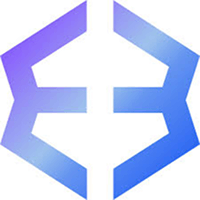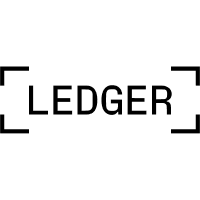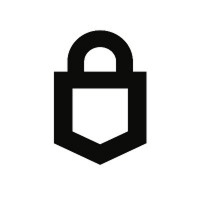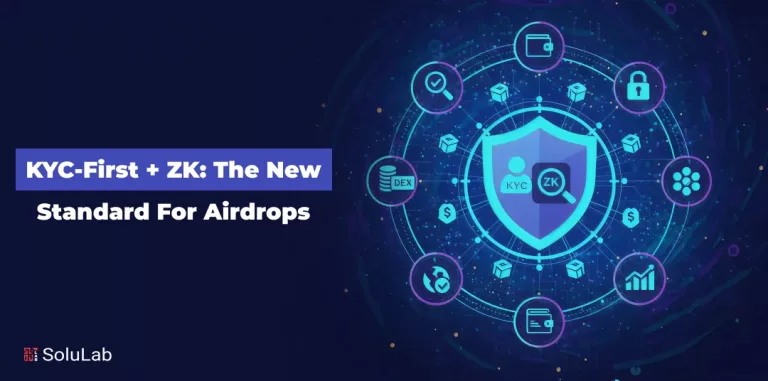Struggling to keep your crypto safe or access dApps without hassle? With so many Web3 wallets out there, choosing the right one can feel overwhelming, especially when each claims to be the most secure or user-friendly.
The problem? Not all wallets are created similarly. Some focus only on storing coins, while others come packed with features like NFT support, staking, and cross-chain compatibility. And then there’s the worry of security, one wrong move, and you could lose everything.
That’s why we’ve put together this curated list of the top Web3 wallets– smart, secure, and built for the decentralized world. Whether you’re a beginner looking for a simple interface or a pro needing advanced tools, we’ll help you find the right fit.
What is a Web3 wallet?
A Web3 wallet is a digital wallet that enables you to interact with blockchain-based applications (also known as dApps), particularly on networks such as Ethereum, Polygon, or Solana. Unlike traditional wallets that store physical money or bank cards, a Web3 wallet stores your cryptographic keys, your proof of ownership for digital assets like cryptocurrencies (e.g., ETH, MATIC) or NFTs.
With a Web3 wallet, you can:
- Send and receive crypto
- Buy, sell, or store NFTs
- Connect to DeFi platforms (like lending or staking)
- Use your wallet as your login tool for dApps (no email/password needed)
Types of Web3 Wallets
There are different types of Web3 wallets, each offering varying levels of control, convenience, and security. Here’s a quick look at the three main types:
1. Custodial Wallets: These wallets are managed by third-party services, such as centralized exchanges (e.g., Binance or Coinbase). Users don’t control the private keys, making it easier for beginners but less secure in case the provider gets hacked.
2. Non-Custodial Wallets: In this type, users fully control their private keys and funds. Wallets like MetaMask and Trust Wallet fall under this category. While they offer more freedom, users are responsible for their own security and recovery phrases.
3. Smart Wallets: Smart wallets use smart contracts to offer advanced features like multi-sig access, social recovery, and spending limits. They are more user-friendly for Web3 newbies and reduce the risks of losing access due to lost seed phrases.
How do Web3 Wallets Work?
Web3 wallets work as a bridge between you and the blockchain, allowing you to manage your crypto assets and interact with decentralized apps (dApps). Here’s how they function step by step:
1. Key Generation: When you create a Web3 wallet, it generates a public key (like your wallet address) and a private key (like your password). The public key is shared to receive funds, while the private key must be kept secret to approve transactions.
2. Wallet Address: Your wallet address is a unique string derived from your public key. It’s what you share to receive crypto. Each wallet has a different address depending on the blockchain it’s connected to, like Ethereum or Solana.
3. Signing Transactions: When you make a transaction like sending ETH or buying an NFT, you sign it using your private key. This signature proves ownership without exposing your private key to the internet.
4. Connecting to dApps: Web3 wallets like MetaMask or Trust Wallet let you log in to decentralized apps directly. Instead of username-password, your wallet signs a request to prove it’s you.
5. On-Chain Interaction: Once a transaction is signed and approved, it’s broadcast to the blockchain. Miners or validators confirm it, and your wallet balance updates after the network confirms the transaction.
Top 10 Web3 Wallets to Watch Out for in 2025

1. MetaMask
MetaMask is one of the most popular Web3 wallets, trusted by millions for accessing Ethereum-based decentralized applications. It works as both a browser extension and a mobile app, making it easy to manage your crypto on the go. Key features include token swapping, support for multiple networks, and secure private key storage.
MetaMask has 21 million monthly active users, supports over 3,700 dApps, and has facilitated more than $10 billion in peer-to-peer swaps. Ideal for both beginners and advanced users looking to explore Ethereum and EVM-compatible blockchains.

2. Coinbase Wallet
Coinbase Wallet is a self-custodial Web3 wallet developed by Coinbase, giving users full control over their crypto and NFTs. Unlike the main Coinbase app, this wallet doesn’t store assets on an exchange; it stores them directly on the blockchain. It supports a wide range of cryptocurrencies and is compatible with Ethereum-based dApps.
Coinbase offers secure backup with cloud options, an easy-to-use mobile interface, and integration with the broader Coinbase ecosystem. It also lets users explore DeFi platforms, swap tokens, and collect NFTs. Best for beginners who want a trusted, user-friendly crypto wallet platform with strong security and brand backing.

3. Phantom
Phantom is a beginner-friendly Web3 wallet primarily designed for the Solana blockchain, though it has expanded to support Ethereum and Polygon as well. It offers a clean interface, easy NFT storage, built-in swapping, and staking features directly within the wallet.
One standout feature is its fast transaction speed and low fees, especially on Solana. Phantom also supports hardware wallet integration for added security. With its strong community and browser extension, it’s ideal for users who are deep into Solana-based DeFi, NFT marketplaces, and gaming dApps. Best for: Solana users and NFT collectors looking for speed and simplicity.

4. Exodus
Exodus is a designed Web3 wallet known for its beginner-friendly interface and strong focus on visual appeal. It supports over 250 cryptocurrencies and allows users to manage their assets across multiple blockchains. One standout feature is its built-in exchange, letting users swap tokens directly within the wallet.
Exodus also offers desktop and mobile apps, along with hardware wallet integration for added security. While it doesn't support direct dApp interaction like MetaMask, it’s great for managing and tracking your crypto portfolio. Idea users who want a visually intuitive and multi-asset crypto wallet experience without deep technical knowledge.

5. Trust Wallet
Trust Wallet is a user-friendly, non-custodial Web3 wallet owned by Binance. It supports over 70 blockchains and lets users store, send, and receive a wide range of cryptocurrencies and NFTs. Trust Wallet offers a built-in Web3 browser, which allows direct access to decentralized apps (dApps).
It also includes staking options for coins like BNB and TRON, giving users the chance to earn passive income. With its simple interface and mobile-first approach, Trust Wallet is best for beginners and everyday crypto users who want a secure and flexible way to explore the Web3 ecosystem.

6. Ledger
Ledger is a hardware-based Web3 wallet known for its top-tier security. Unlike software wallets, Ledger stores your private keys offline, making it nearly impossible for hackers to access your assets remotely. It supports over 5,000 cryptocurrencies and integrates with platforms like MetaMask for seamless DeFi and NFT access.
Ledger devices like the Nano S Plus and Nano X also come with a companion app—Ledger Live—for managing tokens, tracking portfolios, and staking crypto. Best for serious investors and long-term holders, Ledger offers peace of mind to anyone looking to secure their digital assets beyond a typical crypto wallet platform.

7. Rainbow
Rainbow is a Web3 wallet designed specifically for the Ethereum ecosystem. It offers a visually rich interface, making it easy for users to manage their assets, swap tokens, and view NFTs in one place. Rainbow supports WalletConnect, ENS (Ethereum Name Service), and integrates seamlessly with DeFi apps.
It also allows users to back up their wallets using iCloud for added convenience. While it doesn’t support multiple blockchains like some other wallets, it shines in simplicity and Ethereum-focused functionality. Best for NFT collectors, Ethereum users, and those new to Web3 who want a smooth mobile experience.

8. Argent
Argent is a user-friendly Web3 wallet designed with security and simplicity in mind. It eliminates seed phrases by using social recovery methods, making it a great choice for beginners worried about losing access. Argent supports Ethereum-based assets and lets users interact directly with DeFi platforms like Aave and Compound without leaving the app.
It also offers features like daily transaction limits, biometric security, and gas fee optimization. As a smart wallet, Argent prioritizes self-custody while simplifying complex blockchain actions. It's best for users looking for a secure, DeFi-ready crypto wallet platform that doesn’t compromise on ease of use.

9. Gnosis Safe
Gnosis Safe is a highly secure, smart contract-based Web3 wallet designed for managing digital assets and transactions with multiple signers. It allows users to set up multi-signature requirements, making it ideal for teams, DAOs, and organizations that want extra protection over their crypto.
Key features include role-based access, transaction batching, and integration with popular dApps. Gnosis Safe supports Ethereum and several EVM-compatible networks, offering flexibility across ecosystems. It’s best for users who need collaborative control over funds, such as treasury managers or group investors looking for a secure and transparent crypto wallet platform.

10. Trezor
Trezor is one of the most trusted hardware wallets in the Web3 ecosystem, known for its high level of security. It stores your private keys offline, protecting your crypto assets from online threats like phishing or malware. Trezor supports multiple cryptocurrencies and can connect with popular interfaces like MetaMask for easy dApp access.
Its user-friendly interface and backup recovery options make it suitable for both beginners and advanced users. Best for users who prioritize security and want full control over their digital assets, Trezor is ideal for long-term crypto holders and serious Web3 investors.
How to Choose the Right Web3 Wallet?
Choosing the right Web3 wallet is key to managing your crypto assets and accessing decentralized apps securely. Here are some factors to help you pick the best one for your needs:
- Security: Always go for a Web3 wallet with strong encryption, two-factor authentication, and private key control. Smart wallets also offer advanced recovery options and enhanced security for managing your digital assets safely.
- User Friendliness: If you’re new to crypto, a simple interface matters. Look for wallets that are easy to set up, like Binance Web3 Wallet, which balances accessibility with powerful tools for beginners and pros alike.
- Features: Compare wallets based on what you need: multi-chain support, NFT storage, staking, or DeFi access. A crypto wallet platform, supported by expert Web3 consulting services, should offer connectivity with dApps, easy token swaps, and smooth transaction tracking across networks.

Conclusion
Choosing the right Web3 wallet depends on your needs, whether it’s security, ease of use, or access to DeFi and NFTs. From MetaMask’s wide adoption to Trust Wallet’s multi-chain support and the convenience of Binance Web3 Wallet, each crypto wallet platform offers unique advantages.
Some wallets focus on simplicity, while others prioritize advanced features like staking or hardware integration. As Web3 continues to evolve, smart wallets are becoming the future, offering both control and convenience. No matter your level of experience, picking the right Web3 wallet is your first step toward exploring the decentralized internet with confidence and flexibility.
Looking to build your own secure Web3 wallet? SoluLab, a leading Web3 wallet development company in the USA, can help you create customized wallet solutions tailored to your business needs.
FAQs
1. Can I use multiple Web3 wallets at once?
Absolutely! Many users operate more than one Web3 wallet for different purposes, like MetaMask for Ethereum dApps and Phantom wallet for Solana. Just make sure you manage your keys and recovery phrases carefully.
2. Do Web3 wallets charge fees?
Web3 wallets themselves don’t charge fees, but the blockchain networks do. You’ll pay gas fees for transactions depending on the network, such as Ethereum or Polygon.
3. Do I need a Web3 wallet to use DeFi platforms?
Yes, DeFi platforms like Uniswap, Aave, and Compound require you to connect a Web3 wallet. This lets you lend, borrow, or trade crypto without needing a centralized exchange account.
4. How is a Web3 wallet different from a traditional wallet?
Unlike traditional wallets that store fiat or cards, a Web3 wallet stores private keys that control your crypto. It also acts as your login for decentralized apps without needing a username or password.
5. Can I recover a lost Web3 wallet?
Yes, most Web3 wallets provide a recovery seed phrase during setup. Store it securely, because anyone with access to that phrase can access your wallet and funds. If you’re building a custom wallet, consider partnering with a trusted Web3 development company in the USA for added security and scalability.




